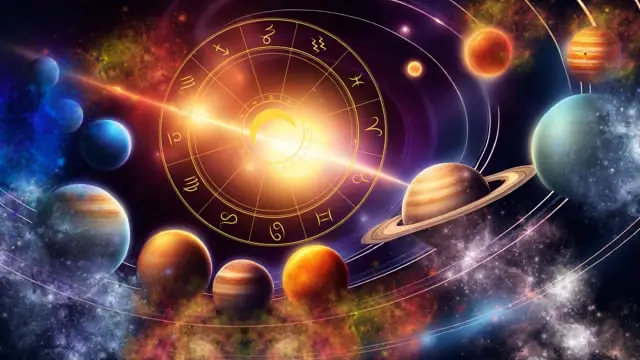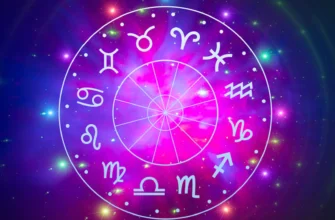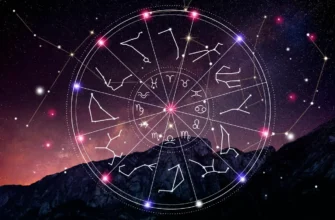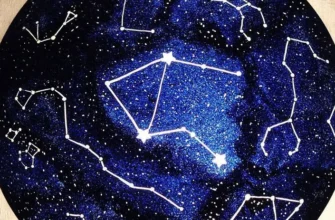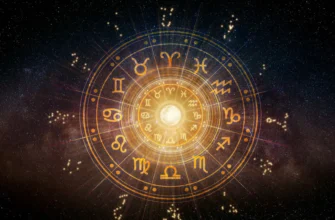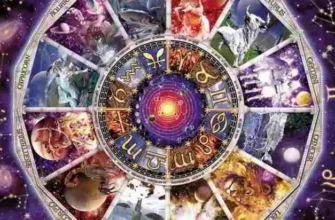Saturn opposition Saturn in synastry ultimately represents inevitable evolution from mutually beneficial cooperation to zero-sum competition as younger person matures and elder person ages, transforming initial complementarity into structural incompatibility neither person anticipated when relationship began. The aspect creates relationships serving important purposes during specific life phases – elder provides mentorship and resources accelerating younger person’s development; younger provides energy and contemporary relevance extending elder’s influence – yet containing built-in obsolescence as time inevitably shifts power balance creating confrontation neither desired but cannot avoid.
The opposition teaches hard lesson about relationships serving temporary purposes rather than representing permanent bonds: some connections benefit both parties during specific circumstances but become destructive as those circumstances change. The mentorship that launches career becomes constraint preventing full independent success; the marriage providing security during youth becomes prison preventing authentic self-expression during maturity; the political alliance building both parties’ power becomes rivalry as protégé’s ambition threatens mentor’s continued dominance.
Saturn represents authority, structure, maturity, career achievement, social status, karma, and the accumulated wisdom and resources gained through time and experience in the Birth Chart. When two people’s Saturns oppose each other across the 180-degree angle, they occupy opposite positions in Saturn’s approximately 29.5-year cycle around the Sun. This opposition most commonly appears in relationships with roughly fifteen-year age gaps (half of Saturn’s cycle) or forty-five-year age gaps (one and a half cycles), creating “elder Saturn” and “younger Saturn” dynamic where both people embody Saturn energy but at dramatically different maturity levels and life stages.
The opposition, as astrology’s aspect of polarity and projection, creates relationship where both people possess similar core qualities – ambition, need for authority, desire for respect, capacity for strategic thinking – but cannot both satisfy these needs simultaneously within same social sphere. They compete for limited resources: status, recognition, decision-making authority, and the deference from others that Saturn craves. One person’s rise necessitates the other’s relative decline within contexts where both operate, creating inevitable tension as younger Saturn’s maturation encroaches on territory elder Saturn considers rightfully theirs.
- The Age Gap Pattern: Fifteen Years Apart
- The Political Pattern: Mentorship Becomes Confrontation
- The Seesaw Effect: Inevitable Power Reversals
- Marriage Context: From Reliance to Power Struggle
- The Hidden Nature: Delayed Recognition of Fundamental Incompatibility
- The Superficial Harmony: Maintaining Appearances Despite Underlying Tension
- Inevitable Evolution from Cooperation to Competition
The Age Gap Pattern: Fifteen Years Apart
Saturn opposition Saturn appears almost exclusively in relationships with specific age gaps corresponding to half or one-and-a-half of Saturn’s cycle. The most common manifestation involves fifteen-year age difference – common in various relationship types including mentor-student, boss-subordinate, older spouse-younger spouse, or political leader-rising protégé. This specific age gap creates precise 180-degree opposition where elder person has experienced roughly fifteen more years of Saturn’s lessons, authority development, and resource accumulation than younger person.
At relationship beginning, this age gap creates complementary dynamic: elder Saturn possesses established position, accumulated resources, mature judgment, and connections younger Saturn lacks. Younger Saturn brings energy, contemporary perspectives, developing potential, and willingness to learn that elder Saturn values and can channel toward purposes serving elder’s interests. Both benefit – elder gains capable lieutenant or protégé enhancing their influence and extending their reach; younger gains mentorship, resources, and accelerated career advancement impossible without elder’s support.
However, Saturn’s nature ensures this harmonious beginning cannot persist indefinitely. Saturn governs maturation, ambition, and authority – as younger Saturn ages and gains experience, they inevitably develop their own authority, accumulate their own resources, and pursue their own ambitions that may conflict with or threaten elder Saturn’s established position. The opposition’s 180-degree angle means they ultimately want similar things – status, respect, decision-making power – yet operate from opposite life stages initially allowing cooperation but eventually forcing competition.
When examining horoscope compatibility for relationships with significant age gaps, Saturn opposition Saturn indicates initial harmony and mutual benefit will likely transform into power struggle as younger person matures, making this aspect particularly problematic for marriages, long-term business partnerships, or any relationships expected to maintain harmony across decades as both people’s life stages and relative power positions shift dramatically.
The Political Pattern: Mentorship Becomes Confrontation
Political relationships provide clearest illustration of Saturn opposition Saturn’s characteristic evolution from mentorship to confrontation. The documented examples involve political leaders (elder Saturn) initially relying heavily on younger political operatives (younger Saturn) for their energy, contemporary perspectives, and ability to connect with younger demographics or cultural spheres elder leaders cannot effectively access themselves.
The elder politician recognizes younger person’s exceptional potential – not seeing them as mere foot soldier but as future leader, someone possessing ambition and capability eventually making them powerful in their own right. This recognition motivates elder’s investment in younger person’s development: providing prominent positions, delegating significant responsibilities, publicly associating with them in ways building younger person’s profile and credibility.
Initially, this arrangement benefits both parties perfectly: elder gains access to demographics and cultural spheres they cannot reach personally, while younger gains platforms, resources, and credibility impossible for political newcomer to achieve independently. The younger person gratefully relies on elder’s support and resources, while elder appreciates younger person’s talents and contributions to their political success.
However, as younger Saturn matures – developing independent political base, accumulating personal resources, building reputation beyond their association with elder patron – the relationship’s fundamental dynamic shifts. The younger person cannot remain perpetually subordinate lieutenant; their ambition and developing power demand independent political identity and eventually independent political office requiring them to compete within same political arena as their former patron.
This maturation triggers inevitable confrontation: elder Saturn feels threatened by younger Saturn’s growing power and independence, recognizing that younger person’s rise potentially diminishes their own authority and relevance. Younger Saturn feels constrained and disrespected by elder’s attempts to maintain subordinate relationship inappropriate for their current level of maturity and achievement. The opposition creates zero-sum dynamic where younger person’s advancement feels like elder’s decline, making cooperation impossible despite shared history and initial mutual benefit.
The confrontation typically persists until elder Saturn retires from active political life – once elder exits the stage, competition ceases because they no longer occupy same arena. The tension disappears not through resolution or reconciliation but through elder’s departure from sphere where both previously competed for limited resources of status, influence, and authority.
In compatibility zodiac analysis for mentor-protégé relationships, Saturn opposition Saturn indicates mentorship will likely deteriorate into rivalry as protégé matures, making this aspect valuable for short-term developmental relationships but problematic for lifelong bonds requiring sustained mutual support and absence of competitive threat across decades.
The Seesaw Effect: Inevitable Power Reversals
Saturn opposition Saturn creates “seesaw effect” where power balance inevitably shifts between elder and younger Saturn over time. Initially, elder Saturn sits high on the seesaw – possessing all advantages of greater age, established position, accumulated resources, and mature authority. Younger Saturn sits low – possessing only potential, developing capabilities, and subordinate position dependent on elder’s support.
However, time inexorably shifts the balance: younger Saturn gains experience, accumulates resources, builds independent base, and develops mature authority transforming them from promising protégé into formidable competitor. Simultaneously, elder Saturn ages – potentially losing energy, becoming outdated in perspectives, watching their established power gradually erode as institutions and contexts evolve beyond patterns where they achieved success.
The seesaw cannot remain balanced at equal power – the opposition’s nature creates tension requiring one person to occupy superior position while other occupies inferior position within contexts where both operate. As younger Saturn rises, elder Saturn must descend relative to younger person’s increasing power even if elder’s absolute position doesn’t decline. This relative shift creates feeling of being threatened, supplanted, or rendered obsolete that elder Saturn finds unbearable despite having once occupied superior position themselves when they were younger Saturn challenging their own former mentor or elder.
The seesaw’s inevitable motion means Saturn opposition Saturn relationships cannot maintain stable equilibrium across decades. Early phase favors elder Saturn; middle phase creates intense tension as both approach equal power triggering maximum confrontation; late phase favors younger Saturn as elder ages toward retirement while younger reaches peak authority and influence. The relationship either ends during middle phase’s confrontation, or persists through uncomfortable accommodation where both people maintain superficial cordiality while privately resenting each other’s presence in shared arena.
This dynamic appears in various relationship contexts: marriages where significantly older spouse initially provides resources and guidance but eventually feels threatened by younger spouse’s maturation and growing independence. Workplace relationships where boss initially mentors promising subordinate but later feels threatened by their success and potential advancement into competitive position. Family businesses where parent grooms child as successor but cannot psychologically release control when child becomes capable of independent leadership.
When using a Free Synastry Chart to assess long-term relationship sustainability, Saturn opposition Saturn indicates power dynamics will shift dramatically over time, making relationship that works beautifully initially likely to deteriorate into tension, competition, or confrontation as younger person matures unless elder person possesses exceptional psychological maturity allowing them to gracefully release authority rather than clinging to power triggering competitive dynamic.
Marriage Context: From Reliance to Power Struggle
Saturn opposition Saturn appears in marriages with significant age gaps – typically fifteen years – where husband is elder Saturn and wife is younger Saturn (though this can reverse depending on which partner is older). Initially, these marriages function smoothly: younger wife relies on older husband’s established resources, mature judgment, and life experience providing security and guidance she appreciates during her twenties and early thirties. Older husband enjoys younger wife’s energy, beauty, contemporary perspectives, and grateful appreciation of resources and wisdom he provides.
However, as wife matures through her thirties into forties – developing career success, accumulating independent resources, forming strong personal identity and values – the relationship’s initial complementarity transforms into power struggle. The wife no longer needs husband’s resources or guidance in ways she once did; she possesses her own money, judgment, and established identity making her increasingly independent. The husband, meanwhile, ages from vigorous middle age toward senior years – potentially losing energy, social relevance, or career power while watching wife gain these very qualities.
This creates multiple friction points: fundamental value differences that remained hidden while wife deferred to husband’s judgment become obvious as she develops independent perspectives. The wife begins questioning or resisting husband’s authority she previously accepted without conflict. The husband feels threatened by wife’s growing independence, potentially responding through controlling behaviors attempting to maintain authority he fears losing. Both people discover they want fundamentally different things from life – differences obscured during early marriage by wife’s youth and subordinate position but becoming undeniable as she matures.
The opposition ensures these tensions cannot be resolved through compromise or better communication – they stem from structural incompatibility between two people at dramatically different life stages attempting to maintain partnership across decades as both their relative positions and individual development trajectories create inevitable conflicts. What worked when wife was twenty-five and husband forty becomes impossible when wife is forty and husband fifty-five, as both have transformed into different people with incompatible needs and irreconcilable power dynamics.
Unlike Saturn square Saturn (representing seven-year age gap) where conflicts appear immediately and obviously, Saturn opposition Saturn’s conflicts emerge gradually over many years – seeming fine initially but deteriorating as younger Saturn matures, making problems difficult to predict or address proactively. Couples might marry believing their age gap creates ideal complementarity only to discover years later that time has transformed initial harmony into unbearable tension neither anticipated when relationship began.
In astrology and horoscope guidance for age-gap relationships, Saturn opposition Saturn indicates marriages or long-term partnerships will face increasing difficulties as younger partner matures, making this aspect inadvisable for people seeking lasting harmonious partnership rather than temporary arrangement serving different purposes for both parties during specific life phases.
The Hidden Nature: Delayed Recognition of Fundamental Incompatibility
Saturn opposition Saturn proves particularly insidious because its problems don’t manifest immediately – unlike aspects between faster-moving inner planets creating obvious friction from relationship beginning, Saturn aspects unfold over years or decades before their full implications become apparent. This delayed manifestation makes Saturn opposition Saturn difficult to recognize as problem requiring addressing until patterns have become deeply entrenched and difficult to change.
The document compares this to medical or economic patterns that experts can detect early through analyzing data and indicators invisible to untrained observers. Economists recognize emerging crises through economic indicators before general public experiences consequences; doctors detect developing health problems through test results before patients feel symptoms. Similarly, astrologers examining natal charts can identify Saturn opposition Saturn patterns predicting relationship difficulties years before those difficulties manifest in ways participants consciously recognize.
Without astrological analysis, people experiencing Saturn opposition Saturn relationships cannot understand emerging patterns – the gradual shift from harmony to tension, the increasing frequency of conflicts, the growing sense of threat or constraint both people feel without understanding why. The couple who married happily when wife was twenty-five and husband forty cannot imagine at wedding that fifteen years later their relationship will have deteriorated into power struggle and value conflicts making continued partnership unbearable.
This hidden nature means Saturn opposition Saturn requires exceptional foresight and proactive management to prevent inevitable deterioration: elder Saturn must consciously and gracefully release authority as younger Saturn matures rather than clinging to power triggering confrontation. Younger Saturn must resist temptation to prematurely challenge elder’s authority while simultaneously preparing independent path allowing eventual separation without destroying elder in process. Both must recognize relationship may serve specific life phase purposes rather than representing permanent partnership capable of maintaining harmony across dramatically shifting life circumstances.
Most people lack this foresight – they assume current harmony will persist indefinitely, failing to anticipate how time inevitably transforms relationship dynamics when Saturn opposition exists. The elder Saturn cannot imagine their beloved protégé will eventually threaten their position; the younger Saturn cannot imagine their generous mentor will eventually resent their success. Both discover too late that aspect creating initial mutual benefit contains seeds of eventual mutual destruction.
When consulting a Synastry Chart Calculator incorporating long-term perspective, Saturn opposition Saturn indicates relationship trajectories rather than static conditions – what works now will not work fifteen years hence, requiring either planned exit strategy or conscious evolution beyond typical relationship patterns to prevent inevitable deterioration as younger person matures and elder person ages.
The Superficial Harmony: Maintaining Appearances Despite Underlying Tension
Saturn opposition Saturn relationships often maintain superficial harmony and public cordiality despite underlying tension both parties consciously recognize but rarely openly acknowledge. The elder Saturn may periodically offer kind words, praise, or gestures of appreciation attempting to placate younger Saturn and prevent open confrontation. To outside observers and even to participants themselves, the relationship may appear quite good – friendly, mutually supportive, functional.
However, the tension remains constantly present beneath surface appearances: younger Saturn feels constrained, under-appreciated, or prevented from achieving their full potential by elder’s continued authority. Elder Saturn feels threatened, disrespected, or made obsolete by younger person’s growing power and independence. Neither openly addresses these feelings because doing so would force confrontation both prefer avoiding while it remains avoidable.
This creates exhausting dynamic where both people maintain performance of harmony while privately experiencing resentment, threat, or frustration they cannot express or resolve. The relationship continues not through genuine mutual satisfaction but through inertia, social pressure to maintain appearances, or practical considerations making open conflict more costly than uncomfortable accommodation.
Eventually, this superficial harmony typically breaks down: either through external crisis forcing suppressed tensions into open conflict, through one person finally departing the shared arena (through retirement, career change, or relationship ending), or through both people achieving sufficient distance that competition no longer feels threatening. However, the breakdown’s timing remains unpredictable – some Saturn opposition Saturn relationships maintain uncomfortable accommodation for decades while others explode into confrontation relatively quickly once tensions begin emerging.
The annual dinners between former business associates mentioned in the document illustrate this pattern perfectly: despite years of ugly confrontation and mutual attempts to force the other’s departure, both maintain superficial friendliness after relationship finally ended, meeting annually while never mentioning unpleasant undercurrents that characterized their partnership. This suggests Saturn opposition Saturn creates binding neither person fully understands or can completely escape even after active relationship ends.
Inevitable Evolution from Cooperation to Competition
For those exploring their Synastry online connections and discovering Saturn opposition Saturn in significant relationships – particularly with fifteen-year age gaps in romantic partnerships, mentor-student bonds, or workplace hierarchies – honest assessment about relationship’s ultimate trajectory becomes essential: Can both people gracefully navigate inevitable power shifts as younger matures and elder ages? Can elder release authority without feeling destroyed or made obsolete? Can younger establish independence without needing to overthrow or destroy former mentor? If answers suggest “no,” recognizing relationship’s limited lifespan allows both parties to extract maximum benefit during mutually beneficial phase while planning exit strategies preventing ugly confrontation when cooperation inevitably transforms into competition.
Saturn opposition Saturn means recognizing that time transforms all relationships, that initial harmony doesn’t predict future compatibility when people occupy dramatically different life stages, and that fifteen-year age gaps create specific challenges as younger person’s maturation inevitably threatens elder person’s established authority within shared spheres. The aspect teaches that some relationships should be celebrated for what they provide during specific life phases rather than mourned when they inevitably deteriorate, that mentors must release protégés who outgrow subordinate positions, and that opposition’s nature ensures equality cannot be maintained – one Saturn must rise while other descends on life’s inevitable seesaw of authority, achievement, and social power across time’s relentless forward march.

